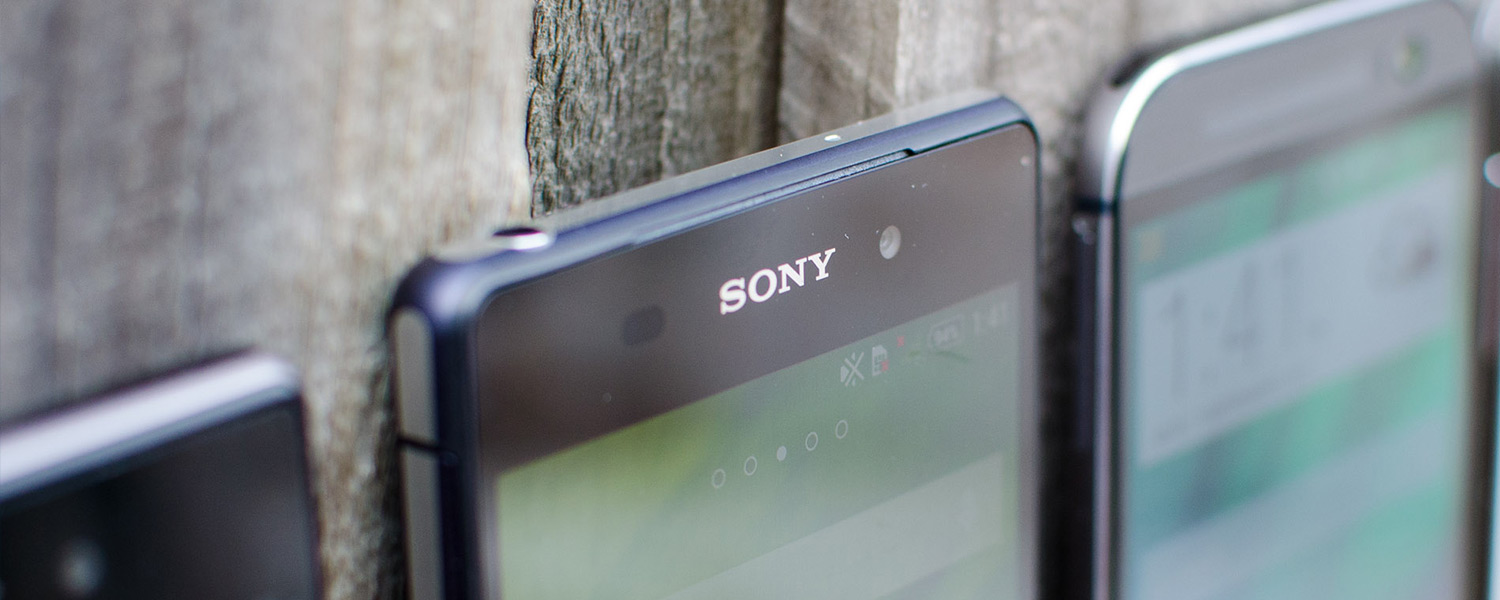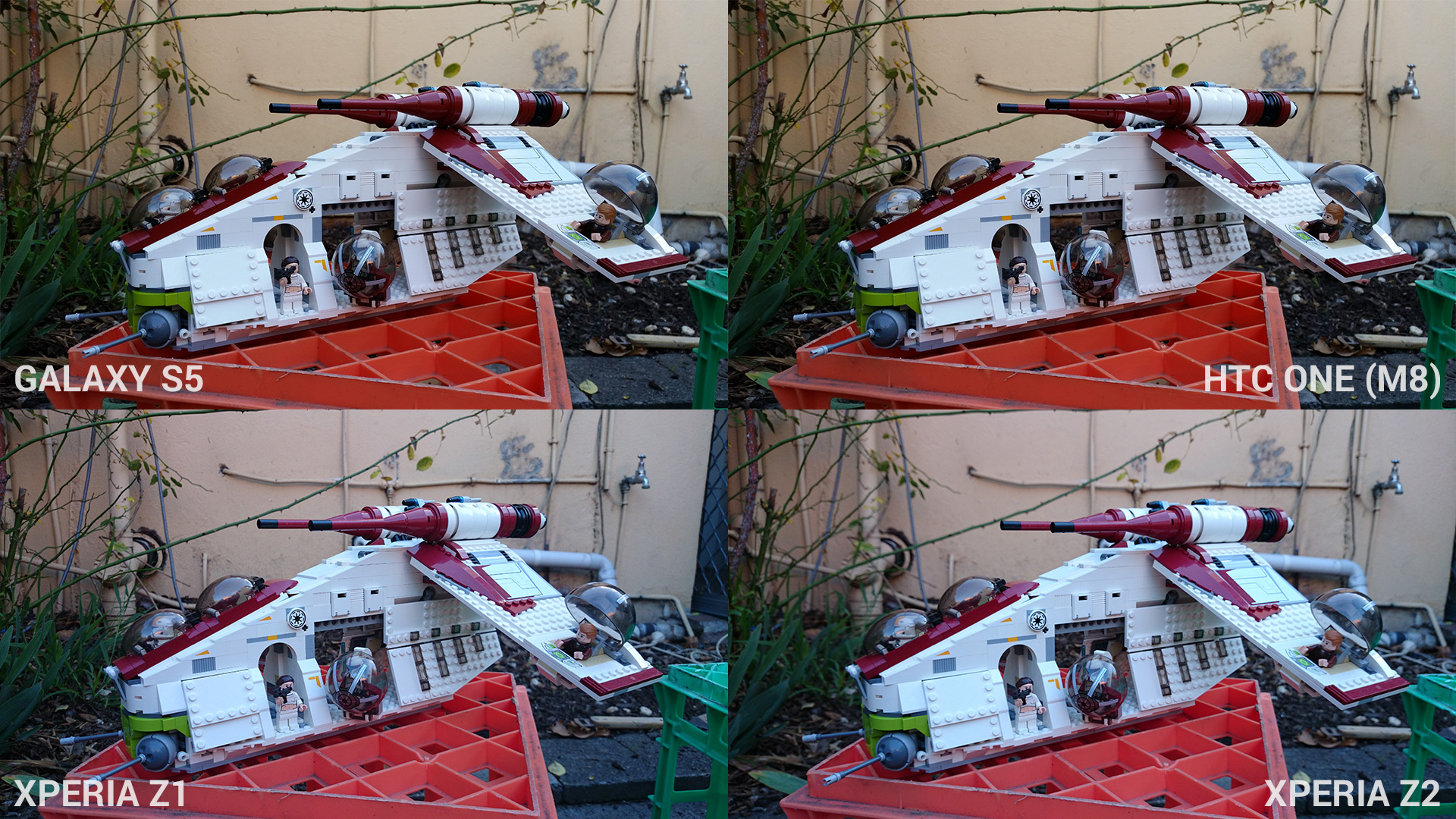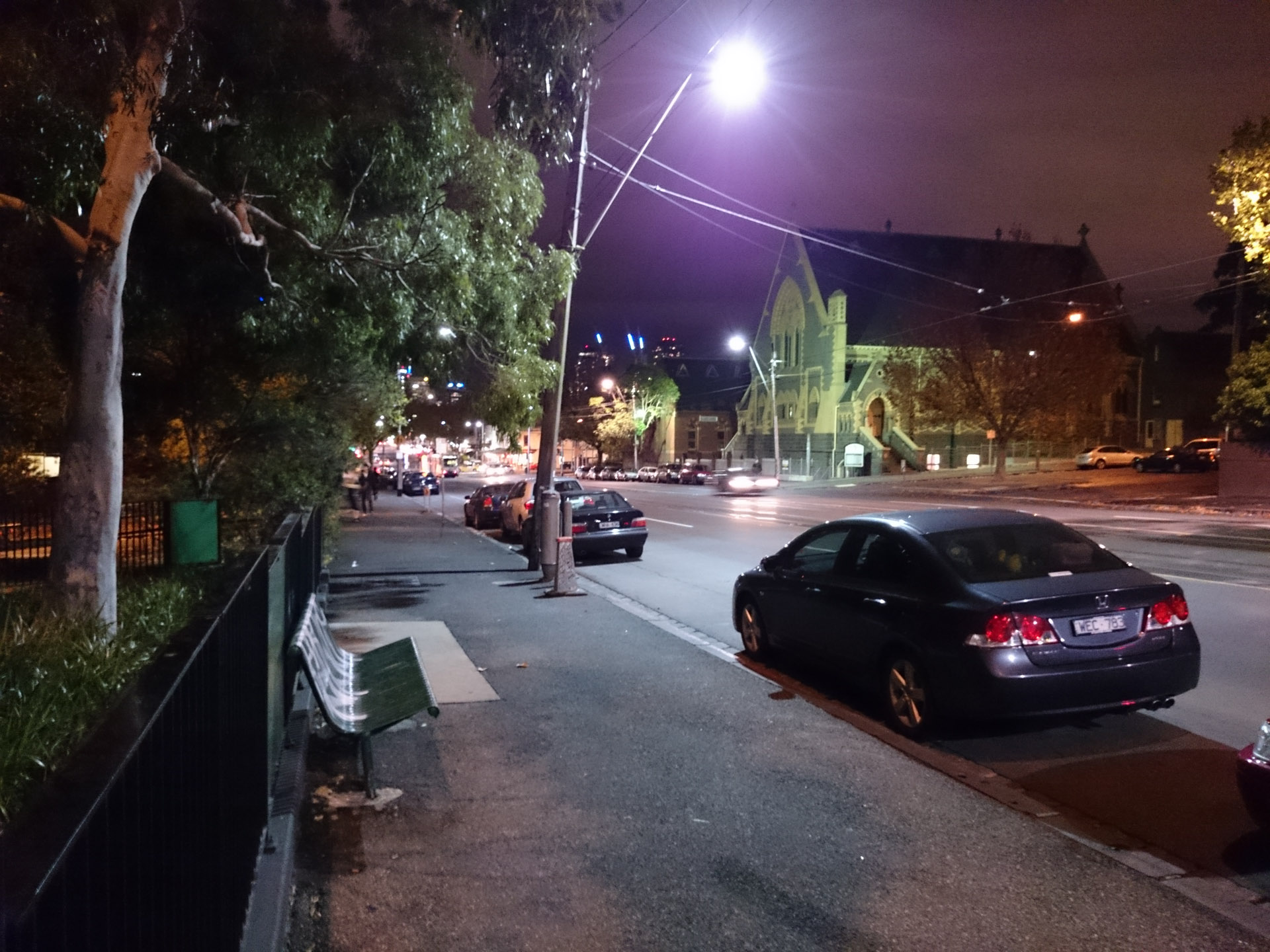Camera: The Same, But Better
The Xperia Z2's rear camera is identical to the Xperia Z1 from a hardware perspective, but that's not to say it hasn't improved. The sensor is a 20.7-megapixel Sony Exmor RS 1/2.3" CMOS with 1.12 µm pixels, paired with a 27mm (in 35mm-effecive numbers) f/2.0 lens. On paper, the Xperia Z2 camera isn't set up for low-light photography, as it lacks large pixels and optical image stabilization (OIS), but results in these conditions may surprise you.
On the front of the Z2, Sony has integrated a 2.2-megapixel camera capable of 1080p video recording. Meanwhile, the rear camera packs 4K Ultra HD video recording, thanks to what Sony claims is increased camera IP block bandwidth provided by the Snapdragon 801. I'm sceptical of this claim, as the Snapdragon 800 found in the Xperia Z1 has been used in a 4K recording smartphone before (the Galaxy Note 3), but I'll take the high-resolution recording regardless.
In many respects, the Xperia Z2's camera is top of the smartphone class. Not only does it bring large resolution images (5248 x 3936) to the table, which result in a stunning level of clarity and detail when you scale down the images it takes, but it also produces remarkably accurate photos.
I say accurate because, generally speaking, what you see with your eyes is what the camera captures, no matter what the conditions are. If it's a bright sunny day, the Xperia Z2 will capture bright, vibrant images that are well balanced; if it's cloudy, the Z2 captures this through duller yet still accurate photos with an appropriate level of saturation.
Through striving for accuracy, sometimes the Xperia Z2 won't deliver photos with 'wow-factor' like you'd get with the Samsung Galaxy S5 or Apple iPhone 5s. There's no overblown contrast or saturation, so not every image you take will look stunning: instead you'll view the photos you've taken and remark at how the scene really did look like that at the time.
Sony's accuracy-focused tweaks to the Z2 camera's metering and processing have made it one of the best at tackling indoor photography. Historically a weak point for smartphone cameras, the Z2 is surprisingly good at taking photos when there's a moderate amount of light available. Again, nothing is oversaturated, and it does struggle when there's strong backlighting or lots of contrast, but you can get a good photo out of the Z2 here when you might not think it's possible.
Accuracy is all well and good - typically something I prefer - but there's no doubting that, in some situations, photos taken by the Xperia Z2's camera are a bit lacklustre in comparison to other flagships. This isn't an issue with the sensor or general hardware setup, which are very good, so I feel that a few software post-processing tweaks could really make the Z2 camera shine.
Click to see 100% crops of the above images
Viewing 100% crops of full-resolution images reveals a decent amount of zooming and cropping legroom. Detail at this level is good, although there are notable artefacts as a result of post processing, as well as visible grain. Downscaling to 1080p looks fantastic as these blemishes disappear, although you could easily get away with a 2x or 3x crop without running into quality issues.
Low-light performance from the Xperia Z2 is easily the best I've seen from a camera lacking OIS and with small pixels in its sensor. The software stabilizer does a good, but not perfect job of removing blur from photos taken at night, while post-processing manages to reduce grain while preserving details. Images come out looking sharp and detailed, which makes you wonder how much better they could be if the Z2's camera module packed OIS.
You're not going to get low-light results that are as good as the HTC One M8 or Nokia Lumia handsets, but the Z2 captures a surprising amount of light for its hardware, making images look bright and accurate. There's an LED flash on the back of the handset, but I tend to avoid using it because it washes out images and isn't all that powerful.
Like with the Xperia Z1, there's still several issues with the Xperia Z2's camera software. Sony has continued to use two main shooting modes: Superior Auto, and Manual. The former is a basic camera mode that does a great job at selecting nearly every setting for you, but only captures images at a supersampled 8-megapixels. Manual, on the other hand, naturally gives you more control and allows you to capture full-resolution (20.7 MP) images, but comes with some restrictions.
By default the camera uses Superior Auto mode, and most people will be fine with its capturing of 8-megapixel 16:9 images that are essentially downscaled (aka. supersampled) from 20 megapixel shots. They look very good and conserve disk space through a lower resolution. However if you are after full resolution images, which I'm sure many people are considering this phone has a large sensor, be wary of several restrictions.
Firstly, you can't capture 20-megapixel HDR images with the Xperia Z2, which I find interesting considering it's not that much larger than the Galaxy S5's 16-megapixels, with that camera supporting full-resolution HDR. The Z2's HDR mode isn't as good as I've seen on other devices; nevertheless it's disappointing that it's locked out at full resolution.
There's also a restricted ISO range, topping out at 1250 (or 800 if you manually select it), and a lack of any scene options. The good news is that the improved camera software and firmware actually makes shooting low-light images at ISO 800 viable, especially when the software image stabilizer is enabled. The bad news is that 8-megapixel images can be shot at up to ISO 6400 with great results - likely due to pixel supersampling - which makes Superior Auto photos look brighter and clearer in the darkest of conditions.
I'd love to see a Superior Auto mode that captures full resolution images without restrictions on HDR and ISO in a future Xperia smartphone. For now, Sony is sticking with producing optimized 8-megapixel images from a 20.7-megapixel sensor, and I don't believe that's the right choice.
Aside from Superior Auto and Manual modes, Sony has packed in a number of other shooting modes that are essentially applications, similar to what Microsoft has done with Lenses in Windows Phone. Some of the main ones include Creative Effect, which applies live filters to images; Timeshift Burst, which captures burst shot images and allows you to select the best one, as well as apply a few effects; and AR Effect is an entertaining but ultimately stupid 3D augmented reality mode.
Background Defocus is Sony's software attempt at producing results like HTC has achieved with their Duo Camera on the One M8. Similar to the Galaxy S5's implementation, Background Defocus takes a burst shot at multiple focus points, and uses software edge detection to find the subject and defocus the background. After the image has been taken, you can adjust the simulated bokeh using a slider, although it's not possible to select multiple focus points.

The Z2's implementation is more effective than the Galaxy S5's at producing a nice defocusing effect, although it's still bound by limitations relating to the lack of a depth sensor. If the subject is too close, Background Defocus doesn't function at all, and if there's too much going on in the scene, it'll struggle to correctly find the edges. The feature is cool to play around with from time to time, but can't match the One M8 on final results.
Moving on to the Xperia Z2's video modes, and this is the first flagship from Sony that can shoot 4K Ultra HD (3840 x 2160) video through a dedicated video mode. I'm not sure why they didn't integrate Ultra HD recording into Manual mode, which can record 1080p video at both 30 and 60 frames per second, although it could be to highlight the feature.
Ultra HD videos are recorded using High profile H.264 with a bitrate of 55 Mbps, meaning one minute of footage requires around 400 MB of storage space. As you'd expect from such large frame sizes, 4K video looks fantastic, just as good as you'd get from taking 8-megapixel stills. Audio quality is also crisp and clear, while metering and focus occur somewhat quickly.
1080p30 (and 1080p HDR) is recorded with a bitrate of 17.5 Mbps, which isn't the highest I've seen from a smartphone, although quality is still very good. Sony has bumped up 1080p60 to 30 Mbps, which is the best mode to use if you want smooth motion, although it does use more storage space. HDR video is good, as the Z2 makes use of the Snapdragon 801's real-time HDR feature, although it can't match the Galaxy S5 in bringing out the detail from shadows.
If you want to check out the 1080p60 video recording quality from the Xperia Z2, you can download a sample here. Above is short a HDR video sample.
A separate shooting mode, called Timeshift Video, records 720p footage at 120 frames per second using High profile H.264 at 50 Mbps. This implementation of high frame rate video recording is interesting in that it firstly saves an original file with playback set to 120 frames per second, and then it allows you to select which parts of the video you want to slow down using a slider. After you've made your selection, it renders the video and sets playback to 30 frames per second.
I like this way of recording high frame rate footage because it allows you to create fantastic videos with a combination of both fast and slow motion. The Snapdragon 801 is more than powerful enough for rendering 720p footage on the fly too, so there's no need to wait for a long time as the final video is processed.


















